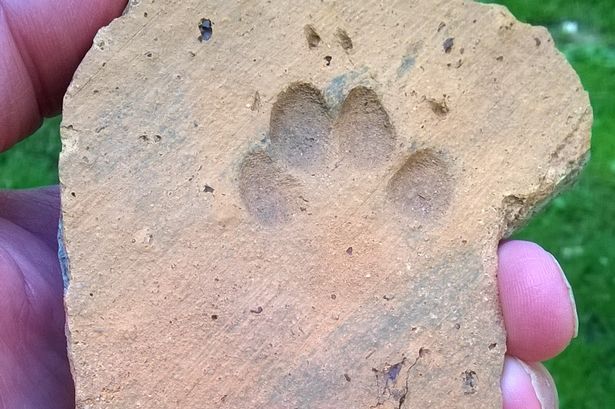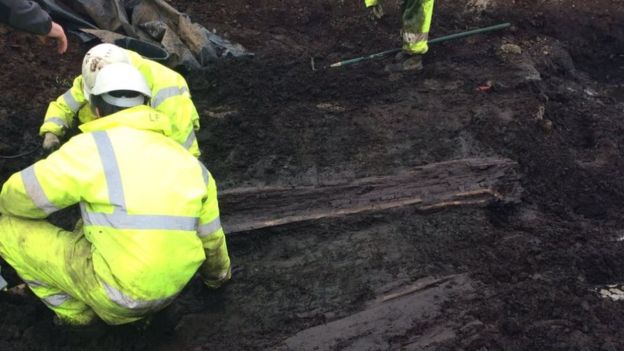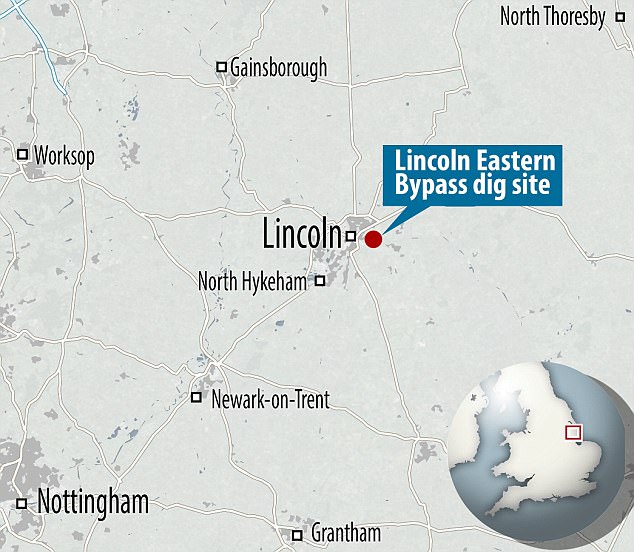Cat’s paw print found in Roman tile at Lincoln dig
Archaeologists have discovered what could be the world’s oldest cat paw print. The imprint of four feline toes was found on a tile which dates back almost 2,000 years.
It is believed the marks were caused when the tile was left out to dry by a Roman potter and a curious cat stepped on it.
The extraordinary historical artifact was uncovered during an archaeological dig ahead of the construction of the £99 million ($130 million) Lincoln Eastern Bypass.

The project has also uncovered tiles with imprints of a dog’s paw and a deer’s hoof.
Ruben Lopez, site manager for Network Archaeology, the company carrying out the work, said: ‘Many of us have pets and animals nowadays so you can see nothing has changed. You identify with finds like this.
‘It is exciting, this site here is one in a thousand.’
A team of 60 archaeologists working at the site has discovered large quantities of tiles – evidence that points to a complex of buildings being built around 100 AD.
It is believed that the tile, which was used in the complex, had just been moulded and was being left to dry before firing when the cat walked across it.
Diggers have been working at the site to ensure that any remains affected by the new road are recorded and protected.
As well as finds from the Roman era, experts have found artifacts dating back 12,000 years at the site between the River Witham and Washingborough Road, Lincoln.
They include a Bronze Age logboat, Mesolithic and Neolithic flint tools, Iron Age roundhouses and burials, and high-status Roman buildings.
The team has also uncovered part of a Bronze Age barrow cemetery, a medieval monastic grange, and post-medieval farm buildings.
Chris Taylor, company director, and senior project manager at Network Archaeology, said: ‘The evidence we’ve seen so far suggests that small communities were already living in this area around 12,000 years ago and that it has been a favoured spot for human activity ever since.

‘Potentially, the site could yield some very important discoveries.
‘We’ve found signs of a high-status Roman building and, more interestingly, a possible Roman vineyard, which is rare north of the Home Counties.
‘Another surprising discovery has been an as-yet-undated cemetery, including at least 18 human burials, possibly belonging to a monastic order.

‘We’ve also found what could be the remains of a 12th-century tower, which may have served as a beacon to warn of approaching threats or as a fort around the time of The Battle of Lincoln in 1141.
‘There’s a lot more work to be done before we have the full picture, but what has been unearthed so far suggests it will be well worth the effort.’
The work is expected to be completed later this year and will be followed by investigations at other sites further along the route.





